|
|
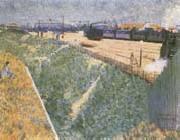 |
Charles Angrand -- Click Here
|
|
French Pointillist Painter, 1854-1926.French painter. He was trained at the Acad?mie de Peinture et de Dessin in Rouen, where he won prizes. Although he failed to gain entry to the Ecole des Beaux-Arts in Paris, Angrand began to win a controversial local reputation for canvases in a loosely Impressionist manner. In 1882 he secured a post as a schoolteacher at the Coll?ge Chaptal in Paris. With this security he was able to make contacts in progressive artistic circles, and in 1884 he became a founder-member of the Salon des Ind?pendants. His paintings of this period depict rural interiors and kitchen gardens, combining the broken brushwork of Monet and Camille Pissarro with the tonal structure of Bastien-Lepage (e.g. In the Garden, 1884; priv. col., see 1979 exh. cat., p. 27). |
|
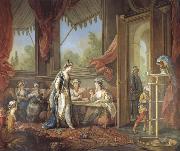 |
Charles Amedee Philippe Van Loo -- Click Here
|
|
French Painter, 1719-1795, was a French painter of allegorical scenes and portraits. He studied under his father, the painter Jean-Baptiste van Loo, at Turin and Rome, where in 1738 he won the Prix de Rome, then at Aix-en-Provence, before returning to Paris in 1745. He was invited to join the Academie Royale de Peinture et de Sculpture in 1747, and that year he married his cousin Marie-Marguerite Lebrun, daughter of the painter Michel Lebrun (died 1753). Among his brothers were the painters Francois van Loo (1708-1732) and Louis-Michel van Loo (1707-1771). |
|
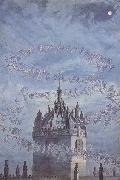 |
Charles Altamont Doyle -- Click Here
|
|
1832-1893
was a Victorian artist. He was the brother of the artist Richard Doyle, and the son of the artist John Doyle. Although the family was Irish, Doyle was born and raised in England. In 1849 he moved to Edinburgh where he met Mary Foley. They were married on 31 July 1855. Their children included Arthur Conan Doyle, creator of Sherlock Holmes, John Francis Innes Hay Doyle (known as Innes or Duff), and Jane Adelaide Rose Foley n??e Doyle (known as Ida). Doyle was not as successful an artist as he wished, and suffered depression and alcoholism. His paintings, which were generally of fairies, such as "A Dance Around The Moon", or similar fantasy scenes, reflected this, becoming more macabre over time. In 1881 Doyle was committed to a nursing home specialising in alcoholism. While there, his depression grew worse, and he began suffering epileptic seizures. Following a violent escape attempt he was sent to Sunnyside, Montrose Royal Lunatic Asylum, where he continued to paint. He died in Crighton Royal Institution in 1893. |
|
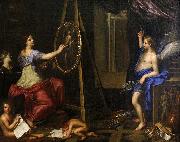 |
Charles Alphonse du Fresnoy -- Click Here
|
|
(1611C1665), French painter and writer on his art, was born in Paris, son of an apothecary.
He was destined for the medical profession, and well educated in Latin and Greek; but, having a natural propensity for the fine arts, he would not apply to his intended vocation, and was allowed to learn the rudiments of design under Perrier and Vouet. At the age of twenty-one he went off to Rome, with no resources; he drew ruins and architectural subjects.
After two years thus spent he re-encountered his old fellow-student Pierre Mignard, and by his aid obtained some amelioration of his professional prospects. He studied Raphael and the antique, went in 1633 to Venice, and in 1656 returned to France. During two years he was now employed in painting altar-pieces in the château du Raincy, landscapes, etc. His death was caused by an attack of apoplexy followed by palsy; he expired at Villiers-le-Bel, near Paris. He never married.
His pictorial works are few; they are correct in drawing, with something of the Caracci in design, and of Titian in colouring, but wanting fire and expression, and insufficient to keep his name in any eminent repute.
He is remembered now almost entirely as a writer rather than painter. His Latin poem, De arte graphica, was written during his Italian sojourn, and embodied his observations on the art of painting; it may be termed a critical treatise on the practice of the art, with general advice to students. The precepts are sound according to the standard of his time; the poetical merits slender enough. The Latin style is formed chiefly on Lucretius and Horace. |
|
 |
Charles - Theodore Frere -- Click Here
|
|
French, 1814 - 1888 |
|
|
|
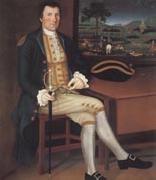 |
Chandler Winthrop -- Click Here
|
|
American Colonial Era Painter, 1747-1790
American painter. He was one of ten children of William Chandler, a farmer, and Jemima Bradbury Chandler of Woodstock, CT. After the death of his father in 1754 and on reaching the age for apprenticeship, Chandler pursued a career as a portrait and ornamental painter. While there is no proof of his presence in Boston, the History of Woodstock (1862) states that he studied portrait painting there. He may also have had the opportunity to view works by the major artist of the city, John Singleton Copley, as well as those of his lesser-known contemporaries, William L. Johnston and Joseph Badger. In the course of his career, Chandler worked in such diverse trades as gilding, carving and illustrating, as well as portraiture, landscape and house painting, suggesting that he received some instruction as an artisan-painter. |
|
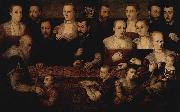 |
Cesare Vecellio -- Click Here
|
|
(c. 1530 - c. 1601) was an Italian painter and engraver of the Renaissance, active in Venice.
He was the cousin of the painter Titian. Like Titian, he was born at Cadore in the Veneto. He accompanied Titian to Augsburg in 1548, and seems to have worked as his assistant. Many of Cesare's pictures were ascribed, perhaps knowingly, to Titian. In the Milan Pinacoteca there is a small Trinity by Cesare. He died at Venice. The woodcuts for the contemporary fashion book, De gli Habiti Antichi e Moderni di Diversi Parti di Mondo published in Venice in 1590 by Cesare, in large may belong to Christopher Krieger from Nuremberg. Cesare also published a book of prints depicting the jewels of royal crowns, titled Corona delle nobili e virtuose donne (1591).
Cesare's brother, Fabrizio di Cadore or Ettore, was little known beyond his native place, for the Council-hall of which he is said to have painted a fine picture. He died in 1580.
|
|
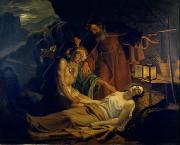 |
Cesare Mussini -- Click Here
|
|
painted Atala in 1835 |
|
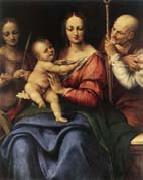 |
Cesare da Sesto -- Click Here
|
|
Italian High Renaissance Painter, 1477-1523, He was an Italian painter of the Renaissance active in Milan and elsewhere in Italy. He was born in Sesto Calende, Lombardy. He is considered one of the Leonardeschi or artists influenced by Leonardo da Vinci, such as Bernardino Luini and Marco D'Oggione. He may have trained or worked with Baldassare Peruzzi in Rome in 1505. Of this period, a lunette in Sant'Onofrio and some paintings in Campagnano Romano are attributed to him. From 1514 he soujourned in Naples for six years. In 1515 he finished a monumental polyptych for the Abbey of Santissima Trinita at Cava de' Tirreni. Back in Milan, he executed a Baptism of Christ, in collaboration with Bernardino Bernazzano (now lost) and a Salome, acquired by Rudolf II and now at the Kunsthistorisches Museum of Vienna. |
|
|
|
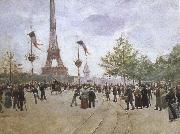 |
cesar franck -- Click Here
|
|
For playwright Frances Burney (1776 C 1828), niece of novelist Fanny Burney Madame d'Arblay 1752-1840, see Frances Burney (1776?C1828)
|
|
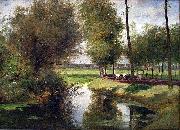 |
Cesar De Cock -- Click Here
|
|
painted Landscape by the River Lys in 1863 |
|
 |
CERUTI, Giacomo -- Click Here
|
|
Italian Painter, 1698-1767
Italian painter. He was one of a group of artists working in Bergamo and Brescia who observed reality with an unusual freshness and directness. He painted religious subjects and portraits but was most distinguished as a painter of genre and low-life scenes. These included many pictures of beggars and vagabonds ( pitocchi), hence his nickname 'il Pitocchetto'. He married in Milan in 1717 but settled in Brescia in 1721. In 1723 he received a horse in payment for three altarpieces and four frescoes for the parish church of Rino di Sonico; they were mediocre works executed in an unadventurous blend of Lombard and Venetian traditions derived from contemporary Venetian painters working in Brescia. Ceruti's early portraits and genre scenes are less conventional and more intensely felt; in 1724 he signed and dated the strikingly naturalistic portrait of Giovanni Maria Fenaroli |
|
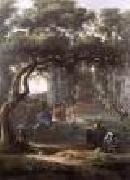 |
CERQUOZZI, Michelangelo -- Click Here
|
|
Italian Baroque Era Painter, ca.1602-1660
Italian painter. He was a painter of bambocciate (low-life subjects), battles, small religious and mythological works and still-lifes. He was born of Roman parents, baptized in the parish of S Lorenzo in Lucina and spent his entire life in his native city. A member of the Accademia di S Luca since 1634, Cerquozzi attended meetings of the society as late as 1652. His friends included Domenico Viola, Pietro da Cortona and Giacinto Brandi. More significant were his associations with foreign residents in Rome. According to Baldinucci, Cerquozzi had special affection for the Spanish, owing to the patronage he received from the major-domo of the Spanish Embassy as a youth, and would often don Spanish attire as a sign of his sentiment. His Spanish connections may partly account for the many commissions he later received from patrons identified with Rome's pro-Spanish political faction (Haskell). Cerquozzi enjoyed equally good rapport with northern European residents of Rome. He is documented as having quartered with artists from beyond the Alps, including Paulus Bor and Cornelis Bloemaert, for the bulk of his career. |
|
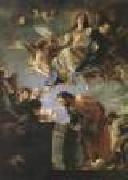 |
CEREZO, Mateo -- Click Here
|
|
Spanish painter (b. ca. 1626, Burgos, d. 1666, Madrid) |
|
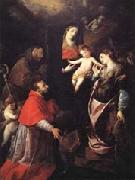 |
Cerano -- Click Here
|
|
(1557/1633) Cerano (Novara), Painter/ Sculptor |
|
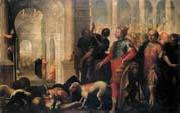 |
CELESTI, Andrea -- Click Here
|
|
Italian painter, Venetian school b. 1637, Venezia, d. 1712, Venezia,Italian painter. He trained first with Matteo Ponzoni, then with Sebastiano Mazzoni; Mazzoni encouraged the development of a Baroque style, but Celesti was also attracted by the naturalism of the tenebrists. The first known works by Celesti are mature in style, and he had already achieved considerable fame in Venice when the Doge Alvise Contarini honoured him with the title of Cavaliere in 1681. The complexity of his sources is evident in two canvases, Moses Destroying the Golden Calf and Moses Chastising the Hebrew People for their Idolatry, both painted c. 1681 for the Palazzo Ducale, Venice, and signed Cavaliere; they are influenced by Luca Giordano and by the narrative techniques of Jacopo Tintoretto. The most distinguished works of Celesti's early period are two large lunettes that show three scenes: Benedict III Visiting St Zacharias, A Doge Presented with the Body of a Saint, and the Virtues Surrounding a Doge Holding the Model of St Zacharias (c. 1684; Venice, S Zaccaria). These luxuriant compositions represent a remarkable leap in quality from the paintings of the Palazzo Ducale, with lighter colours and a more flickering touch. A little later Celesti left Venice for Brescia, perhaps by way of Rovigo; exactly when he arrived is not known, but he established himself and his studio there for several years. Panfilo Nuvolone and Francesco Paglia (1636-1713) had encouraged the development of a more exuberant Baroque style in Brescia, and in response Celesti created more decorative, lyrical works, such as his ecstatic St Rose of Lima (Brescia, S Clemente) with its brilliant display of glorious light. Most of Celesti's paintings done in and around Brescia were religious canvases, but he also painted portraits, such as the two entitled Condottiero (Ljubljana, Slov. Acad. Sci. & A.) and the portrait of Conte Alberto di Baone (Dublin, N.G.), executed in a dazzling array of colours. In 1688 Celesti was active at Toscolano on Lake Garda, where he painted canvases of scenes from the Life of St Peter (Toscolano Cathedral) and in 1689 decorated the salone of the Palazzo Delay (now Palazzo Mafizzoli) with Old Testament scenes. In 1696 he was at Treviso, where he executed a Last Judgement for the cathedral (untraced) and in 1697, 1698 and 1699 pictures for the abbey of S Floriano at Linz, where his Paradise, for the high altar, remains in situ. By 1700 Celesti was back in Venice, where he set up his studio; Venetian artists of this period, led by Giovanni Coli and Filippo Gherardi, were reviving the style of Veronese, and Celesti, following this trend, produced late works that employed more dazzling effects of colour and light. These works include the frescoed decoration of the Villa Rinaldi Barbini at Casella d'Asolo, where Celesti created a series of exotic and theatrical mythological and biblical scenes, distinguished by their luminosity and by their light and airy touch. His last works were three dramatic night scenes: the Birth of the Virgin, the Assumption of the Virgin and the Martyrdom of St Lawrence (1706-11; Verolanuova Cathedral). Celesti was much admired by Charles-Nicholas Cochin (i) and by Jean-Honor? Fragonard, and his colour influenced the Rococo art of the early 18th century in Venice and in Austria. |
|
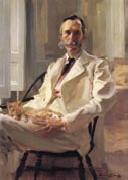 |
Cecilia Beaux -- Click Here
|
|
American figure and portrait painter , 1855-1942
American painter. She began her career painting on porcelain and producing lithographs and portrait drawings. She studied with Catharine Ann Drinker (1871), Francis Adolf van der Wielen (1872-3) and Camille Piton (1879), at the Pennsylvania Academy of the Fine Arts in Philadelphia (1877-8), and privately with William Sartain (1881-3). Under Sartain's guidance, she learnt to paint, producing her first major portrait, the Last Days of Infancy |
|
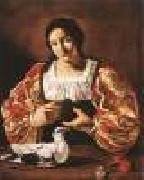 |
CECCO DEL CARAVAGGIO -- Click Here
|
|
Italian Baroque Era Painter, active ca.1610-1620
Painter active in Italy. His nationality is not known. He was a follower of Caravaggio, and his rare works reveal a highly original and idiosyncratic response to that artist's naturalism. Agostino Tassi mentioned him as involved, with several French artists, in the decoration of the Villa Lante at Bagnaia between 1613 and 1615, |
|
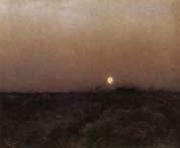 |
Cazin Jean-Charles -- Click Here
|
|
French landscapes painter and ceramist , 1841-Le Lavandou 1901
Painter and ceramicist. His earliest paintings reveal close affinities with the realist tradition, while his later compositions (mostly landscapes of northern France) demonstrate an awareness of Impressionism and a commitment to recording the changing effects of light and atmosphere. He was sent to England for health reasons but by 1862 or 1863 was living in Paris and active in avant-garde artistic circles. |
|
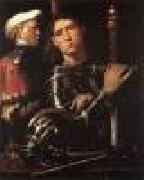 |
CAVAZZOLA -- Click Here
|
|
(b. ca. 1486, Verona, d. 1522, Verona)
Italian painter
Italian painter..was an Italian painter of the Renaissance, active mainly in his hometown of Verona. He appears to have been a pupil of one of the brothers Morone, likely Francesco Morone |
|
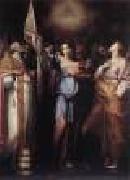 |
CAVAROZZI, Bartolomeo -- Click Here
|
|
Italian painter, Roman school (b. ca. 1590, Viterbo, d. 1625, Roma).
Italian painter, active also in Spain. His formative years were spent in Rome, where he went as a boy and where his first teacher was the Viterbese painter Tarquinio Ligustri. Through Ligustri he became acquainted with the aristocratic Roman family headed by the Marchese Virgilio Crescenzi (d 1592) and eventually lived with them in their home near the Pantheon and studied at Giovanni Battista Crescenzi's academy of art. |
|
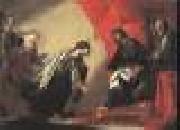 |
CAVALLINO, Bernardo -- Click Here
|
|
Italian Baroque Era Painter, ca.1616-1656
Italian painter and draughtsman. He was the most individual and most poetic painter active in Naples during the first half of the 17th century. He painted mainly small cabinet pictures, on canvas or on copper, for dealers and for highly cultivated private patrons; he had few public commissions and apparently never painted any large-scale decorations for private or ecclesiastical patrons. His subject-matter is largely derived from the Old and New Testaments, the Apocrypha, Tasso and from Roman history and mythology. Documentary evidence for his life and work is almost non-existent, and he remains enigmatic and elusive as a historical figure. Yet as a painter he is strikingly distinctive, uniting a refinement and virtuosity of brushwork with an intensely naturalistic observation of surfaces, and complex and dramatic compositions with an extraordinary brilliance of palette. Only eight pictures are signed, initialled or inscribed with Cavallino's name. No works are documented and only five may be tentatively identified with pictures in mid-18th-century Neapolitan collections described by Bernardo de Dominici. |
|
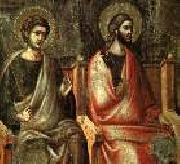 |
CAVALLINI, Pietro -- Click Here
|
|
Italian Gothic Era Painter, ca.1250-1330
Italian painter and mosaicist active mainly in Rome. His major surviving works are mosaics depicting scenes from the life of the Virgin for the Roman church of Santa Maria in Trastevere (1290s) and fragments of a fresco cycle, including a Last Judgment, for the church of Santa Cecilia in Trastevere (c. 1293). He was the first to break with the stylizations of Byzantine art; his figures have a sense of weight and three-dimensionality. Cavallini had many students, |
|
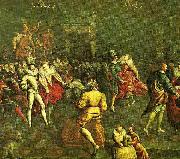 |
caulery -- Click Here
|
|
ball at the valois court.c
1582
rennes, museum |
|
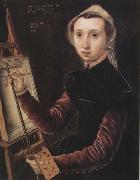 |
Catharina Van Hemessen -- Click Here
|
|
1528-after1587
was a Flemish Renaissance painter. She is the earliest female Flemish painter for whom there is verifiable extant work. As with many Renaissance female painters, she was the daughter of a painter, Jan Sanders van Hemessen (c. 1500-after 1563), who was likely her teacher. She went on to create portraits of wealthy men and women often posed against a dark background. Included in her body of work is a self-portrait done in Basel. She has inscribed the painting with the year, 1548, and her age, 20 years. Her success is marked by her good standing in the Guild of St. Luke and her eventual position as teacher to three male students. Van Hemessen gained an important patron in the 1540s, Maria of Austria, who served as regent of the Low Countries for her brother Charles V. In 1554, she married Christian (or Christien) de Morien, an organist at the Antwerp Cathedral, which was at that time an important post. In 1556, when Maria resigned her post and returned to Spain, Caterina and her husband also moved, on invitation of her patron, to Spain. And two years later, when Maria died, Caterina was given a sizeable pension for life. Caterina and her husband returned to Antwerp. She was mentioned in Guicciardini's Description of the Low Countries of 1567 as one of the living women artists. She died after 1587. She mainly created portraits characterized by realism. The sitters, often seated, were usually seen against a dark or neutral ground. This type of framing and setting made for an intimate portrait. There are no extant works from after 1554, which has led some historians to believe her artistic career might have ended after her marriage. Van Hemessen is often given the distinction of creating the first self-portrait of an artist, of either gender, depicted seated at an easel. |
|
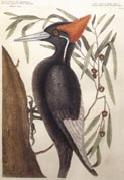 |
Catesby Mark -- Click Here
|
|
English-born artist-naturalist and Traveller, b.c.1679 d.1749
|
|
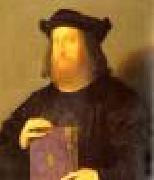 |
CATENA, Vincenzo -- Click Here
|
|
Italian Painter, ca.1480-1531
His paintings represent the perpetuation of the style of Giovanni Bellini into the second quarter of the 16th century. He made few concessions to the modern style that was being introduced to Venice by Titian, Palma Vecchio, Pordenone and others in the same period. This archaicizing tendency was shared by several minor Bellinesque painters of the period, including Pietro degli Ingannati, Pietro Duia, Francesco Bissolo, Vittore Belliniano and the Master of the Incredulity of St Thomas. Catena, together with Marco Basaiti, with whose works Catena's are sometimes confused, can be considered the most accomplished of these. Despite the fact that he counted several humanists in his circle, the extant repertory of his subjects is limited to religious themes, mainly Marian and including three altarpieces, and to male portraits. |
|
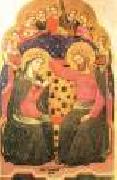 |
CATARINO -- Click Here
|
|
Italian painter, Venetian school (known 1362-1382 in Venice) |
|
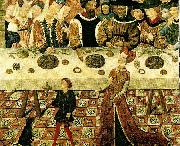 |
catalan school -- Click Here
|
|
banquet of herod
mid-fifteenth century
new york, metropolitan museum |
|
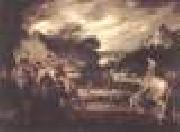 |
CASTILLO, Antonio del -- Click Here
|
|
b. 1616, Cordoba, d. 1668, Cordoba
Spanish painter and draughtsman. He studied first with his father, Agust?n del Castillo (d July 1631), a painter also known for his drawings, and in November 1631 began a three-year apprenticeship with Ignacio de Aedo Calderen, a painter of religious figures ( pintor de imaginera). From 1635 to 1638 Castillo was also known as painter and pintor de imaginera, and by December 1638 |
|
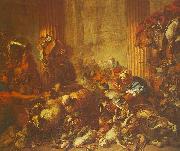 |
CASTIGLIONE, Giovanni Benedetto -- Click Here
|
|
Italian Baroque Era Painter, ca.1609-1664
Painter, printmaker and draughtsman. Most of his works are scenes of the journeys of the patriarchs (e.g. Noah, Abraham, Isaac, Jacob), drawn from the book of Genesis and filled with animals and still-life detail. His oeuvre also, however, includes many spectacular mythological and religious compositions set in expansive landscapes, and for these he found inspiration in Classical mythology, ancient history, Aesop's Fables, 16th-century Italian literature and the lives of the saints. Early biographers claim that he was also a prolific portrait painter, but few examples, save the so-called portrait of Gianlorenzo Bernini (c. 1648-50; Genoa, Pal. Bianco), have been conclusively identified. His surviving subjects reveal his interest in magic and metamorphosis and in philosophical questions such as the frailty of human life, the inevitability of death and the search for truth.
|
|
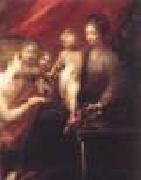 |
CASTELLO, Valerio -- Click Here
|
|
Italian painter, Genoese school (b. 1624, Genova, d. 1659, Genova)
Painter and draughtsman, son of Bernardo Castello. He was one of the leading Ligurian painters of the 17th century, whose art developed from a continuous and passionate study of a wide range of sources. His paintings of mythological and religious subjects unite an elegant figure style with an interest in dramatic and violent compositions; his touch is spontaneous and his palette vibrant with reds and pinks, blues and yellows. His brilliant decorative frescoes introduced the splendour of the High Baroque to Genoese painters. He was well known for his rapid oil sketches, with light and lively brushwork, which anticipate aspects of the Rococo. |
|
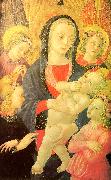 |
Castello Nativity, Master of the -- Click Here
|
|
Italian Early Renaissance Painter, active ca.1450-1475 |
|
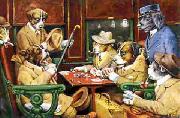 |
Cassius Marcellus Coolidge -- Click Here
|
|
(September 18, 1844?CJanuary 13, 1934) was an American artist, best known for a series of nine paintings of anthropomorphized dogs.
Born in upstate New York to abolitionist Quaker farmers, Coolidge was known to friends and family as "Cash." While he had no formal training as an artist his natural aptitude for drawing led him to create cartoons for his local newspaper when in his twenties. He is credited with creating Comic Foregrounds, life-size cutouts into which one's head was placed so as to be photographed as an amusing character.
In 1903, Coolidge contracted with the advertising firm of Brown & Bigelow of St. Paul, Minnesota, to create sixteen oil paintings of dogs in various human poses. |
|
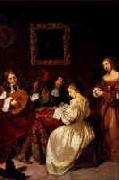 |
Casper Netscher -- Click Here
|
|
Dutch Baroque Era Painter, ca.1635-1684 |
|
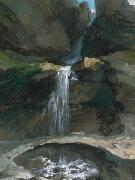 |
Caspar Wolf -- Click Here
|
|
Caspar Wolf (Muri, Aargau, 3 May 1735 - Heidelberg, 6 October 1783) was a Swiss painter, known mostly for his dramatic paintings of Alps. He was strongly influenced by Albrecht von Hallers poem on the Alps, and the Sturm und Drang movement. After 1773 Wolf mostly painted glaciers, caves, waterfalls and gorges.
Wolf was the son of a furniture maker, who was banned from his city. Wolf was trained in Konstanz, between 1753 and 1759 he worked in Augsburg, Munich, Passau as a decoration painter. Not being able to sell his work he went disappointed back to his home town. For Horben Castle he painted by hand the wallpaper on the first floor. In 1768 Wolf lived in Basel. From 1769 till 1771 he stayed in Paris and worked with Philip James de Loutherbourg. In 1774 he moved to Bern. Wolf made a deal with the local publisher Abraham Wagner who had a geological interest, to deliver 200 paintings. He travelled with Wagner or a minister Jakob Samuel Wyttenbach in Berner Oberland and Wallis. From 1780-1781 he was working in Spa, Cologne, Aix-la-Chapelle and Desseldorf. He died in poor circumstances in a hospital.
In 1779 his prints were exposed were Bern but the selling of the book became a failure. Wagner became help from a Swiss army officer in Dutch service and in 1785 30 aquatints were published in Amsterdam. Till 1948 90 of these aquatints were exposed in Keukenhof Castle, but sold. Today these works can be seen in the Kunsthaus in Aarau.
His son Theodor Wolf (1770 - 1818) was a still life painter. |
|
 |
Caspar van Wittel -- Click Here
|
|
(born Caspar Adriaensz. van Wittel, later a.k.a. Gaspare Vanvitelli, Gasparo degli Occhiali) (1653 - September 13, 1736) was a Dutch Golden Age landscape painter.
Van Wittel was born in Amersfoort. He learned painting first from Thomas Jansz van Veenendaal for 4 or 5 years and then from Matthias Withoos for 7 years, until Withoos left Amersfoort. In Amersfoort, he likely was exposed to Dutch landscape artists such as Jan van der Heyden and Gerrit Berckheyde. His first extant works were made in Hoorn in 1672, but he relocated to Rome with his family ca. 1675 and made his career there. Like his former teacher, he joined the Bentvueghels with the nickname "Piktoors" or "Toorts van Amersfoort"(torch of Amersfort).
He married in Rome in 1697, and stayed most of his life in that city, though, between 1694 and 1710, he toured Italy and painted in places like Florence, Bologna, Ferrara, Venice, Milan, Piacenza and Naples. He is one of the principal painters of topographical views known as vedute.
Gaspar van Wittel died in Rome. His son Luigi would become a famous architect and also carries the italianized family name of Vanvitelli.
In Luigi's biography is written that his father was born in July 1656, but Van Wittel's grave in Rome states that he died at the age of 83 in 1736.
|
|
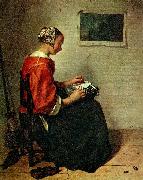 |
caspar netscher -- Click Here
|
|
Caspar (or Gaspar) Netscher (Heidelberg, 1639 ?C Den Haag, January 15, 1684) was a Dutch portrait and genre painter. He was a master in depicting oriental rugs, silk and brocade and introduced an international style to the Northern Netherlands.
Little is know of Netscher's early years. According to Arnold Houbraken's 17th century biographical study of Dutch painters he was born in Heidelberg or Prague. His father Johann Netscher probably was a sculptor from Stuttgart who died in Poland when he was two years of age. It is also suggested that Caspar may have been the son of a Rotterdam painter. His mother, fleeing from the dangers of a civil war, carried him to Arnhem. On her way two of her children died. In Arnhem he was adopted by a physician named A. Tullekens. At first he was destined for the profession of his patron, but owing to his great aptitude for painting he was placed under a local artist named Hendrick Coster, and in 1654 became a student of Ter Borch in Deventer, who had family connections to Tullekens. He was Ter Borch's most gifted pupil, probably worked as an assistant as well and he appears several times as a model on Ter Borch's paintings.
The Lace-Maker by Caspar Netscher (1662), oil on canvas, 33 x 27 cm. Wallace Collection, LondonIn 1658 he set out for Italy to complete his education there. However, he didn't get farther south than Bordeaux that fall, where he married Margaretha Godijn in 1659. There he toiled hard to earn a livelihood by painting small cabinet pictures which are now highly valued on account of their exquisite finish. After moving to The Hague in 1662, possibly because of the prosecutions of Protestants, he turned his attention to portrait-painting. In this branch of his art was more successful. In 1668 he joined the Schutterij and Cosimo III de' Medici, traveling through the Netherlands bought four paintings.
It is likely that Netscher knew the painters Frans van Mieris, Sr. (1635 -1681) and Gerard Dou, but it is certain that he knew the painter Gerrit de Hooch from The Hague as his wife gave her name to Gerrit's new born daughter Margarita in 1676, the event being witnessed by Caspar as well as his wife. He was patronized by William III, and his earnings soon enabled him to gratify his own taste by depicting musical and conversational pieces.
|
|
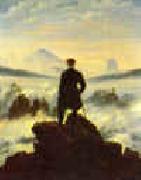 |
Caspar David Friedrich -- Click Here
|
|
1774-1840 Caspar David Friedrich Locations German painter, studied art at Copenhagen, and in 1798 settled in Dresden. Friedrich painted chiefly landscapes and seascapes, with and without figures, architectural pictures, including a few of Dresden, and some religious subjects. Religious feeling and symbolism permeate his œuvre, of which the seascape with figures, Die Lebensstufen, is a characteristic example. He possessed considerable power to convey mood in landscape. Almost forgotten in the 19th c. and early 20th c., interest in his work increased considerably in the mid-20th c. He is hardly represented in Britain, but an exhibition of 112 of his pictures at the Tate Gallery in 1972 attracted much attention. F. G. Kersting was a friend of Friedrich. |
|
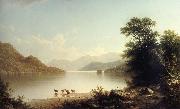 |
Casilear John William -- Click Here
|
|
American Hudson River School Painter, 1811-1893
was an American landscape artist belonging to the Hudson River School. Casilear was born in New York City. His first professional training was under prominent New York engraver Peter Maverick in the 1820s, then with Asher Durand, himself an engraver at the time. Casilear and Durand became friends, and both worked as engravers in New York through the 1830s. By the middle 1830s Durand had become interested in landscape painting through his friendship with Thomas Cole. Durand, in turn, drew Casilear's attention to painting. By 1840 Casilear's interest in art was sufficiently strong to accompany Durand, John Frederick Kensett, and artist Thomas P. Rossiter on a European trip during which they sketched scenes, visited art museums, and fostered their interest in painting. Casilear gradually developed his talent in landscape art, painting in the style that was later to become known as the Hudson River School. By the middle 1850s he had entirely ceased his engraving career in favor of painting full-time. He was elected a full member of the National Academy of Design in 1851, having been an associate member since 1831 |
|
|
|
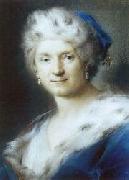 |
CARRIERA, Rosalba fg -- Click Here
|
|
Italian Rococo Era Painter, 1675-1757
|
|
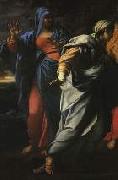 |
CARRACCI, Lodovico -- Click Here
|
|
Italian Baroque Era Painter, 1555-1619 |
|
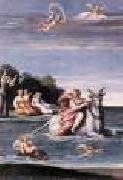 |
CARRACCI, Antonio -- Click Here
|
|
Italian Baroque Era Painter, ca.1583-1618
Painter, son of Agostino Carracci. He was born either c. 1583 (Baglione) or in 1589 (Bellori). His mother was a Venetian courtesan named Isabella. After his father's death, he joined the Roman household of his uncle Annibale Carracci. While Antonio may have collaborated with other studio assistants on the wall frescoes (1603-4) of the Galleria Farnese and the decoration (1606; commissioned from Francesco Albani) of some rooms in the Palazzo Mattei di Giove, Rome, his earliest undisputed works date from after Annibale's death in 1609. At that time, according to Monsignor G. B. Agucchi (Malvasia), Antonio returned briefly to Bologna, with the intention of joining Ludovico Carracci's studio, but the proposed collaboration came to nothing. A frescoed Vision of St Francis in the lower oratory of S Colombano was most probably painted during this Bolognese sojourn, and his Burial of Christ (Rome, Gal. Borghese) dates from c. 1609. He returned to Rome in 1610 and assisted Guido Reni in the Pauline Chapel of the Palazzo del Quirinale, where he painted Virtues and other subsidiary figures on the walls. |
|
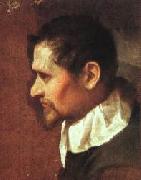 |
CARRACCI, Annibale -- Click Here
|
|
Italian Baroque Era Painter, 1560-1609
Painter, draughtsman and printmaker, brother of Agostino Carracci. Since his lifetime, he has been considered one of the greatest Italian painters of his age. His masterpiece, the ceiling (1597-1601) of the Galleria Farnese, Rome, merges a vibrant naturalism with the formal language of classicism in a grand and monumental style. |
|
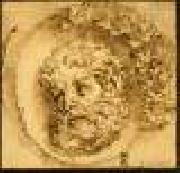 |
CARRACCI, Agostino -- Click Here
|
|
Italian Baroque Era Painter, 1557-1602
Painter, engraver and draughtsman, cousin of Ludovico Carracci. He abandoned his profession as a tailor, which was also that of his father, Antonio, and began training as a painter. According to Faberi, he studied first in the workshop of the painter Prospero Fontana (like Ludovico), then trained under the engraver and architect Domenico Tibaldi and under the sculptor Alessandro Menganti (1531-c. 1594). However, it is likely that Faberi's account was influenced by his desire to present Agostino's career as an example of the versatile 'cursus studiorum' advocated by the Accademia degli Incamminati. Other sources (Mancini, Malvasia, Bellori) agree that it was his cousin Ludovico who was responsible for directing him towards painting. |
|
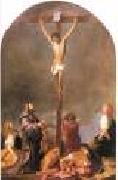 |
CARPIONI, Giulio -- Click Here
|
|
Italian painter, Venetian school (1613-1674) |
|
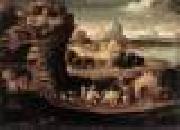 |
CARPI, Girolamo da -- Click Here
|
|
b. 1501, Ferrara, d. 1556, Ferrara
His father Tommaso ( fl 1503-23) was a painter and decorator at the court of the Este in Ferrara, and Girolamo was trained in the workshop of Garofalo. He visited Rome in the early 1520s (Fioravanti Baraldi) and was in Bologna in 1525, where he worked with Biagio Pupini and Giovanni Borghese on the decoration of the sacristy of S Michele in Bosco. Around this time (1525) he painted the altarpiece of the Virgin Enthroned with Saints |
|
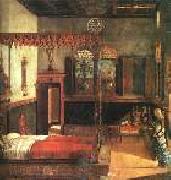 |
CARPACCIO, Vittore -- Click Here
|
|
Italian High Renaissance Painter, ca.1450-1525 |
|
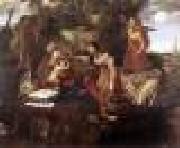 |
CAROSELLI, Angelo -- Click Here
|
|
Italian painter, Roman school (b. 1585, Roma, d. 1652, Roma)
Italian painter. He was the son of a dealer in second-hand goods and taught himself to paint. According to Baldinucci, he knew Caravaggio, who fled Rome in 1606, and this association may have encouraged his decision to become a painter. After visits to Florence (1605) and Naples (1613), Caroselli settled in Rome, where, in 1615, he married a Sicilian, Maria Zurca. His weakness for beautiful women was notorious (Baldinucci; Passeri). His second marriage, to Brigitta Lauri, daughter of the Flemish painter Balthasar Lauwers or Lauri (1578-1645), |
|
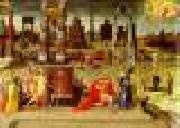 |
CARON, Antoine -- Click Here
|
|
French Mannerist Painter, ca.1520-1598 |
|
 |
Carolus-Duran -- Click Here
|
|
French Academic Painter, 1838-1917 |
|
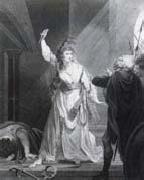 |
Caroline Watson -- Click Here
|
|
British 1760-1814,Daughter of James Watson. In 1780 she signed a stipple print of Isaac Watts and was soon employed by John Boydell (e.g. Prince William of Gloucester, 1784, after Joshua Reynolds). In 1785 she became Engraver to Queen Charlotte (1744-1818), a keen print collector. She was particularly fitted to working after miniatures, such was the delicacy of her engraving, and some of her best prints are portraits and small subjects after Samuel Shelley (c. 1750-1808). She did private commissions of this kind, notably for the Bute family, and also engraved large plates, some for the Boydell Shakespeare Gallery, including the Death of Cardinal Beaufort (1792) after Reynolds, allegedly at his request. She was employed by William Hayley (1745-1820) on his Life of George Romney Esq (London, 1809), and the correspondence involved shows her as a reliable and respected professional. |
|
 |
Carnicero, Antonio -- Click Here
|
|
Spanish, approx. 1748-1814
Painter and draughtsman, son of Alejandro Carnicero. He arrived at the Court in Madrid with his father in 1749 and took part in the competitions held by the Real Academia de S Fernando, winning second prize in 1769 with the Coronation of Alfonso XI and Queen Mary in the Monastery of Huelgas de Burgos (Madrid, Real Acad. S Fernando, Mus.). In 1760 he won a scholarship to Rome, subsequently winning prizes from the Accademia di S Luca. On his return to Madrid in 1766 he worked as a portrait painter, producing works such as the portrait of Do?a Tomasa de Aliaga, Widow of Salcedo (Madrid, Prado). In 1788 he was elected an honorary member of S Fernando. Under the protection of the Spanish prime minister, Manuel Godoy, Prencipe de la Paz, whom he painted on several occasions , and after painting the portraits of Charles IV and Maria Luisa (both Madrid, Monasterio de la Encarnacien), he was appointed Pintor de Cemara in 1796. In 1798 he applied unsuccessfully for the post of drawing-master to the Prince of Asturias, the future Ferdinand VII, although by 1806 he was teacher of the Infante Princes. He was a refined draughtsman and prepared illustrations for the editions of Cervantes's El ingenioso hidalgo Don Quixote de la Mancha published by the Real Academia Espa?ola (Madrid, 1780; 1782). He also made the drawings for the handsome engravings (Madrid, Calcografra N.) of the Real Picadero (Royal Riding School). In addition to his portraiture, which displays a talent for realism and wit, although at times combined with slightly garish colours, Carnicero executed attractive and descriptive costumbrista paintings, depicting everyday life, popular gatherings and hunting scenes, for instance Duck Shooting on the Albufera, Valencia |
|
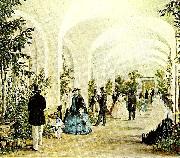 |
carmignani -- Click Here
|
|
(born January 22, 1945 in Altopascio) is an Italian professional football coach and a former player.
|
|
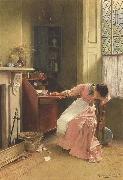 |
Carlton Alfred Smith,RI,RWS -- Click Here
|
|
fl.1871-1916
|
|
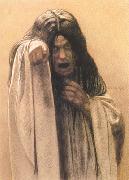 |
Carlos Schwabe -- Click Here
|
|
German Symbolist Painter, 1877-1926
Swiss painter and printmaker of German birth. He became a Swiss citizen and received his artistic training under Joseph Mittey (b 1853) at the Ecole des Arts Decoratifs in Geneva. Following brief success there, Schwabe moved to Paris where he supported himself as a designer of wallpaper while he developed considerable graphic skills. He soon became active in Symbolist circles, winning favour as an illustrator of mystical religious themes. His highly refined drawings and watercolours accompany texts such as Le Reve by Emile Zola (published 1892; drawings, Paris, Pompidou; exhibited Sociot Nationale des Beaux-Arts, also in 1892), Baudelaire's Les Fleurs du mal (1900), Maeterlinck's Pellias et Melisande, Catulle Mendes's L'Evangile de l'enfance de notre Seigneur Jesus-Christ selon Saint Pierre (1900) and Albert Samain's Jardin de l'Infante (1908). |
|
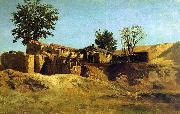 |
Carlos de Haes -- Click Here
|
|
Spanish
1826-1898
Carlos de Haes Galleries
Spanish painter of Belgian birth. In 1835 he moved with his parents to M?laga, where he studied under the court portrait painter and miniature painter Luis de la Cruz y R?os (1776-1853). In 1850 he returned to Belgium and studied with the landscape painter Joseph Quineaux (1822-95). During his studies there and on his travels in France, Germany and Holland, he became acquainted with contemporary Realist trends. He returned to Spain in 1855, becoming a naturalized Spaniard, and the following year he exhibited numerous landscapes at the Exposici?n Nacional, Madrid, to much acclaim. In 1857 he won the competition for the fourth chair of landscape painting at the Escuela de Bellas Artes in Madrid with View of the Royal Palace from the Casa de Campo (1857; Madrid, Real Acad. S Fernando), a work showing characteristics of the Barbizon and Fontainebleau landscape schools. In 1860 he was elected Acad?mico de m?rito at the Real Academia de S Fernando in Madrid. By 1861 he was officiating and drawing up the regulations for the landscape competitions for aspiring pensionnaires. Consequently plein-air works came to be required in place of the previous tradition of submitting historical landscapes executed in the studio, a practice that discouraged the study of nature. De Haes suggested that only final corrections should be made in the studio, an attitude that indicates his timid initiation and acceptance of Realist trends. |
|
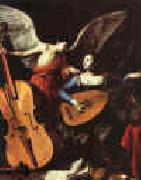 |
Carlo Saraceni -- Click Here
|
|
1580-1620
Italian
Carlo Saraceni Galleries
Carlo Saraceni (Venice 1579-Venice, 16 June 1620) was an Italian early-Baroque painter, whose reputation as a "first-class painter of the second rank" was improved with the publication of a modern monograph in 1968.
Though he was born in Venice, his paintings are distinctly Roman in style; he moved to Rome in 1598, joining the Accademia di San Luca in 1607. He never visited France, though he spoke fluent French and had French followers and a French wardrobe. His painting, however, was influenced at first by the densely forested, luxuriantly enveloping landscape settings for human figures of Adam Elsheimer, a German painter resident in Rome; "there are few landscapes by Saraceni which have not been attributed to Elsheimer," Malcolm Waddingham observed, and Anna Ottani Cavina has suggested the influences may have travelled both ways. and Elsheimer's small cabinet paintings on copper offered a format that Saraceni employed in six landscape panels illustrating The Flight of Icarus; in Moses and the Daughters of Jethro and Mars and Venus.
Saint Sebastian
Castle Museum, PragueWhen Caravaggio's notorious Death of the Virgin was rejected in 1606 as an altarpiece suitable for a chapel of Santa Maria della Scala, it was Saraceni who provided the acceptable substitute, which remains in situ, the only securely dated painting of his first decade in Rome. He was influenced by Caravaggio's dramatic lighting, monumental figures, naturalistic detail, and momentary action (illustration, right), so that he is numbered among the first of the "tenebrists" or "Caravaggisti". Examples of this style can be seen in the candlelit Judith and the Head of Holofernes.
Saraceni's matured rapidly between 1606 and 1610, and the next decade gave way to his fully mature works, synthesizing Caravaggio and the Venetians. In 1616?C17 he collaborated on the frescoes for the Sala Regia of the Palazzo del Quirinale. In 1618 he received payment for two paintings in the church of Santa Maria dell'Anima. The compositional details of his fresco of The Birth of the Virgin in the Chapel of the Annunciation of the church of Santa Maria in Aquiro are repeated in a panel on copper at the Louvre
In 1620 he returned to Venice, where he died in the same year. He was so influential on the style of an anonymous still life painter working in Rome, that the man is known as "Pensionante del Saraceni" |
|
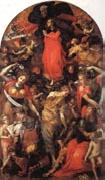 |
Carlo Portelli -- Click Here
|
|
c. 1508 - Florence 1574 |
|
|
|
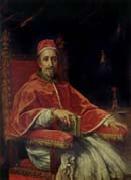 |
Carlo Maratti -- Click Here
|
|
Italian Baroque Era Painter, 1625-1713,Italian painter, draughtsman and printmaker. He was the last major Italian artist of the classical tradition that had originated with Raphael, and his pre-eminence among the artists of his time marks the triumph of classicism. Nonetheless his art unites the virtues of disegno and colore, and he created a grandiose and decorative style that satisfied the demands of the Church. |
|
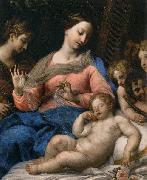 |
Carlo Maratta -- Click Here
|
|
(13 May 1625 - 15 December 1713) was an Italian painter, active mostly in Rome, and known principally for his classicizing paintings executed in a Late Baroque Classical manner. Although he is part of the classical tradition stemming from Raphael, he was not exempt from the influence of Baroque painting and particularly in his use of colour. His contemporary and friend, Giovanni Bellori, wrote an early biography on Maratta.
|
|
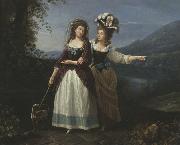 |
Carlo Labruzzi -- Click Here
|
|
painted Aleksandra and Izabela Potocki taking a stroll near to lake Albano in 1779-1780
|
|
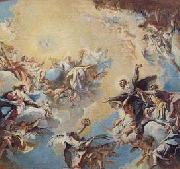 |
Carlo Innocenzo Carlone -- Click Here
|
|
(1686-1775) was an Italian painter and engraver, active especially in Germany.
He was a native of Scaria, near Como, in Lombardy, but may have been from the Carloni family of Genoese painters. He was the son of a sculptor, but he preferred painting, and was placed under the care of Giulio Quaglio. He afterwards studied at Venice and at Rome, until he was 23 years of age, when he visited Germany, where he has left works in oil and in fresco at Ludwigsburg, Passau, Linz, Breslau, Prague, and Vienna.
He painted large decorative fresco cycles for palaces in Vienna, Prague and Southern Germany. For example, Carlone is known for painting the ceiling images in the Upper Belvedere of the Belvedere palace complex. His The Glorification of Saints Felix and Adauctus (1759-61) was commissioned for the cupola of the church of San Felice del Benaco on Lake Garda. He died at Como.
|
|
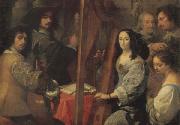 |
Carlo Francesco Nuvolone -- Click Here
|
|
Italian Baroque Era Painter, 1609-1662
was an Italian painter of the Baroque period, active mainly in Lombardy. He was born in Milan to an Cremonese father and mannerist painter, Panfilo Nuvolone. After working with his father, he studied under Giovanni Battista Crespi (il Cerano) in the Accademia Ambrosiana in Milan. In that studio he would have encountered Daniele Crespi and Giulio Cesare Procaccini. Of particular interest is his depiction of himself as a painter surrounded by his family of artists |
|
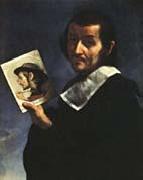 |
Carlo Dolci -- Click Here
|
|
Italian Baroque Era Painter, 1616-ca.1686
was an Italian painter of the Baroque period, active mainly in Florence, known for highly finished religious pictures, often repeated in many versions. He was born in Florence, on his mother's side the grandson of a painter. Although he was precocious and apprenticed at a young age to Jacopo Vignali, Dolci was not prolific. "He would take weeks over a single foot", according to his biographer Baldinucci. His painstaking technique made him unsuited for large-scale fresco painting. He painted chiefly sacred subjects, and his works are generally small in scale, although he made a few life-size pictures. He often repeated the same composition in several versions, and his daughter, Agnese Dolci, also made excellent copies of his works. Dolci was known for his piety. It is said that every year during Passion Week he painted a half-figure of the Saviour wearing the Crown of Thorns. In 1682, when he saw Giordano, nicknamed "fa presto" (quick worker), paint more in five hours than he could have completed in months, |
|
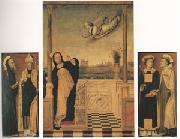 |
Carlo di Braccesco -- Click Here
|
|
active in Liguria and Lombardy 1478-1501 |
|
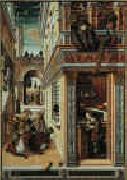 |
Carlo Crivelli -- Click Here
|
|
1430-1495
Italian
Carlo Crivelli Locations
1495). He produced many large, multi-partite altarpieces in which his highly charged, emotional use of line, delight in detail, decoration and citric colours, often set against a gold ground, convey an intensity of expression unequalled elsewhere in Italy. His mastery of perspective was also used for dramatic impact. As he worked in isolation in the Marches, his style only had local influence. In the 19th century, however, he was one of the most collected of 15th-century Italian painters. |
|
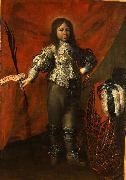 |
Carlo Ceresa -- Click Here
|
|
Carlo Ceresa (January 20, 1609 - January 29, 1679) was an Italian painter of the Baroque period active mainly around Bergamo.
His early life and training are poorly recorded. He likely trained in Bergamo. He visited Venice, yet esconced himself in the small town of San Giovanni Bianco in Val Bembrana. Mostly recalled for his portraiture, Ceresa also painted altarpieces and religious works in an understated fashion. |
|
 |
Carlo Bononi -- Click Here
|
|
Italian, 1569-1632,Italian painter. He was among the last great painters of the Ferrarese school, his style uniting warm Venetian colour with the lyrical effects of light and elegant draughtsmanship of Ludovico Carracci. He was a pupil of Giuseppe Mazzuoli (c. 1536-89), but his early activity is little documented. The Martyrdom of St Paul (Pommersfelden, Schloss Weissenstein), which is indebted to Mazzuoli and combines elements of Ferrarese and Venetian traditions, may represent the earliest phase of his development. Later, through a study of the art of Ludovico Carracci, modified by a response to Dosso Dossi and to Correggio, he developed a more individual style. An altarpiece of the Virgin with SS Maurilius and George (Vienna, Ksthist. Mus.) is unanimously dated before 1600. It is probable that Bononi made study tours to Bologna, Parma, Verona and Venice. Between 1605 and 1610 he spent two years in Rome (Baruffaldi), a visit confirmed by three paintings of scenes from the Life of St Paternian in the church of S Paterniano in Fano; dated between 1610 and 1612 (Emiliani), these reflect a direct study of Caravaggio and of his early Roman followers, such as Orazio Borgianni. |
|
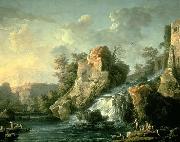 |
Carlo Bonavia -- Click Here
|
|
was an Italian painter known for idyllic landscape paintings, engravings and drawings. He was active from 1740 until his death in 1788. He is thought to be from Rome, but worked in Naples from about 1751 to 1788. He was trained in the Neapolitan landscape tradition of Salvator Rosa (1615-1673) and Leonardo Coccorante (1680-1750), but was much more strongly influenced by the work of Claude Joseph Vernet, who visited Naples in 1737 and 1746. |
|
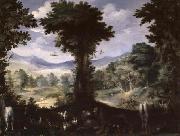 |
Carlo Antonio Procaccini -- Click Here
|
|
(born 1555) was an Italian painter of the late-Renaissance period.
He was the third son of Ercole, the brother of Camillo and Giulio Cesare the elder, and father of Ercole Procaccini the Younger (1605?C1675). He was born at Bologna and initially trained by his father, though he excelled in painting landscapes and still-lifes with flowers and fruit, mainly in Milan.
|
|
 |
Carlo Dolci -- Click Here
|
|
1616-1686
Italian
Carlo Dolci Locations
Italian painter. The major Florentine painter of the 17th century, he enjoyed an international reputation in his own lifetime. He was a gifted portrait painter and painted a number of large altarpieces, but his reputation is largely based on his half-length, single-figure paintings, characterized by their intense religiosity and meticulous technique. His mature style was complex and sophisticated. Intended for cultivated and aristocratic circles, his was never a popular art in any sense. Baldinucci described the painter tormented fantasy and dark fantasms, and his disturbed personality is evident throughout his work after the later 1640s. |
|
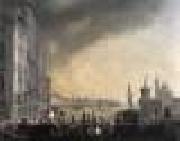 |
CARLEVARIS, Luca -- Click Here
|
|
Italian Baroque Era Painter, ca.1665-1731 |
|
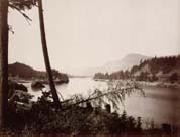 |
Carleton E.Watkins -- Click Here
|
|
American photographers , b. 1829, d. 1916
was a noted 19th century California photographer. Carleton Emmons Watkins was born in Oneonta, upstate New York. He went to San Francisco during the gold rush, arriving in 1851. He traveled to California with Oneontan Collis Huntington, who later became one of the owners of the Central Pacific Railroad, which helped Watkins later in his career. His interest in photography started as an aide in a San Francisco portrait studio, and started taking photographs of his own in 1861. He became interested in landscape photography and soon started making photographs of California mining scenes and of Yosemite Valley. He experimented with several new photographic techniques, and eventually favored his "Mammoth Camera," which used large glass plate negatives, and a stereographic camera. He became famous for his series of photographs and historic stereoviews of Yosemite Valley in the 1860s, and also created a variety images of California and Oregon in the 1870s and later. Watkins purchased the 1860s Central Pacific Railroad construction stereoview negatives from CPRR official photographer Alfred A. Hart and continued their publication through the 1870s. However Watkins was not a good businessman. He spent lavishly on his San Francisco studio and went deeply in debt. His photographs were auctioned, following a business setback, resulting in his photographs being published without credit by I. W. Taber, the new owner. Watkins also had problems of his photographs being reprinted without permission by Eastern companies and with other photographers rephotographing the exact scenes Watkins photographed. In 1879, Watkins married his 22-year-old assistant, Frances Sneade, with whom he had two children. Watkins began anew with his "New Series," which included a variety of subjects and formats, mostly related to California. |
|
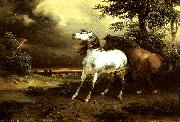 |
carle vernet -- Click Here
|
|
Antoine Charles Horace Vernet aka. Carle Vernet (14 August 1758 - 17 November 1835) was a French painter, the youngest child of Claude Joseph Vernet, and the father of Horace Vernet.
The Battle of Wagram; colored litho by Carle Vernet and Jacques SwebachBorn in Bordeaux, Vernet was a pupil of his father and of Nicolas-Bernard Lepicie. Strangely, after winning the grand prix (1782), his father had to recall him back from Rome to France to prevent him from entering a monastery.
In his Triumph of Paulus Aemilius, he broke with tradition and drew the horse with the forms he had learnt from nature in stables and riding-schools. His hunting-pieces, races, landscapes, and work as a lithographer were also very popular.
Carle's sister was executed by the guillotine during the Revolution. After this, he gave up art.
When he again began to produce under the French Directory (1795 - 1799) , his style had changed radically. He started drawing in minute detail battles and campaigns to glorify Napoleon. His drawings of Napoleon's Italian campaign won acclaim as did the Battle of Marengo, and for his Morning of Austerlitz Napoleon awarded him the Legion of Honour. Louis XVIII of France awarded him the Order of Saint Michael. |
|
|